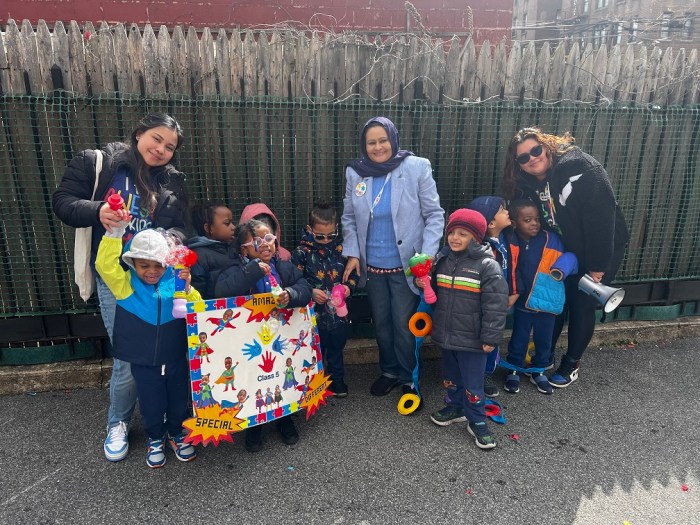The umbrella hawkers were warning “rain all day,” but Randy Williams already had his.
He was directing pedestrian traffic toward an affordable housing protest at City Hall, where despite the weather a couple thousand parishioners and supporters were pushing a plan for more affordable housing.
Mayor Bill de Blasio was elsewhere, fending off the Italian-American culture wars while marching in the Columbus Day parade. Yet back at the office, a surprisingly robust and focused group had showed up complaining that one of his core initiatives hadn’t gone far enough. And that protest came largely from a group that the mayor has leaned on and courted in the past: Brooklyn churches.
Come rain or shine
“Go right here, darling. This way sir,” Williams said, showing the path toward a set-aside area for protesters along Broadway. “I didn’t see you in church,” he jokes to one woman. Others shake his hand or ask for directions. The 77-year-old is retired from a nearby Wall Street tech-specialist job, and knows the area well.
He’s also an elder at St. Paul Community Baptist in East New York. Elders can preach if a long line of church hierarchy is incapacitated, but mostly the job is helping people in smaller ways: problem-solving as he was doing on Monday. Up at the podium was St. Paul’s firebrand Pastor David K. Brawley, a proselytizer for a big non-mayoral-approved housing plan including 15,000 units for seniors. Brawley has been pressing the case directly with de Blasio recently. For Williams, East New York residents could do with some political problem-solving in the meantime. Find a way to get NYCHA apartments painted quicker than every decade or so, for example. Better stoves and refrigerators.
Maybe this is the sentiment that got so many people to come out on a grim day to rally about housing policy: the big ten-thousand foot issues, but also the smaller persistent ones. De Blasio argues that he’s moving the ball down court. In a response to Brawley’s plan via letter over the weekend, the mayor pointed to the big increases in city spending plus 25,000 units under construction and 50,000 more whose affordability had been preserved. Brawley and the faith leader organizers from Metro Industrial Areas Foundation New York are pushing for more action, squabbling with de Blasio over the existence of potential funding and construction sites to develop more affordable units.
Housing is an issue to which de Blasio has been attentive: it was a cornerstone of his first term and he’s focused lots of attention on East New York, the location of a controversial rezoning and various subsidies. But ultimately, despite mutual agreement on the problem and some of the solutions, there is a sense among some residents in places like East New York that life hasn’t gotten all that much better after four years. Displacement lurks, gentrification creeps, “affordable” ends up not really being affordable for many, and all the paint does is get more chipped.
Namaste Brooklyn
After about an hour, the speeches stop. It’s a short event, and the rain isn’t helping. Cruelly, the rain seems to increase in strength as the crowd heads for the subways, and Williams is directing them to connecting trains. “Namaste,” he says to some as they pass.
As the crowd thins, he says he’s seen plenty of politicians in his 20-plus years at the church. It’s a common stopping point. Politician comes, promises something from the lectern. Does the officeholder fully follow through before coming back to the neighborhood asking for another vote? All mayors face such questions, de Blasio no less despite his apparent cruise to re-election. Some residents are still asking themselves how their part of the city has fared.
“I think Brooklyn is the future,” Williams says, wiping some spare rain off his face with a tissue. “But it has its ups and downs.”

















